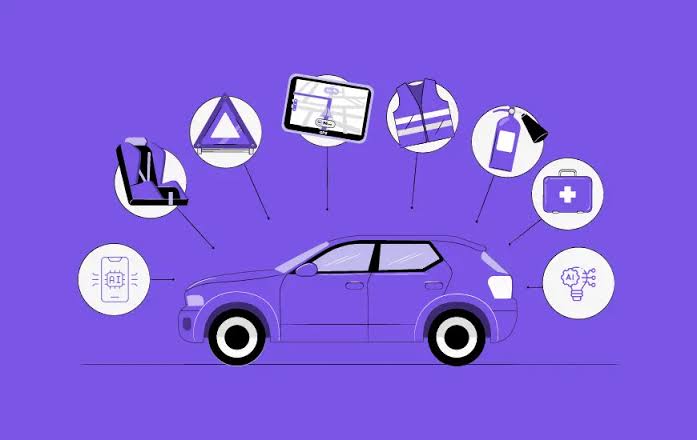Explore the top 10 AI technologies driving the development of autonomous vehicles, including computer vision, machine learning, and cybersecurity, shaping the future of transportation.
The progress, in self driving cars stands out as a remarkable and game changing development in todays transportation landscape. Central to this revolution is intelligence (AI) which fuels a range of technologies allowing vehicles to navigate analyze data and make decisions on the fly. The incorporation of AI into self driving vehicles goes beyond substituting human drivers; it involves an array of features designed to improve safety, efficiency and user satisfaction. This article delves into the ten AI innovations that are shaping the future of vehicles.
1. Computer Vision
Computer vision plays a role, in the operation of vehicles by helping them perceive and comprehend their environment. Through the use of sensors computer vision technology evaluates information to identify objects, traffic signs, road markings, pedestrians and other vehicles. Sophisticated algorithms work on this data to form a detailed understanding of the surroundings empowering the vehicle to make decisions. Methods like image recognition, motion detection and depth perception are crucial for ensuring navigation.
2. Sensor Fusion
Self driving cars use sensors like LIDAR, radar and ultrasonic detectors to understand their surroundings. Sensor fusion is the technique of merging data from sensors to get a clearer and more comprehensive picture of the environment. By combining information from sources vehicles can enhance their dependability and safety. This process improves obstacle recognition, localization and the ability to navigate complex scenarios making it a key technology, in autonomous driving.
3. Machine Learning
The technology behind AI in self driving cars relies heavily on learning. This process involves teaching algorithms to identify patterns and make predictions using data. Machine learning algorithms enhance a vehicles ability to recognize and react to driving situations. For example these algorithms can be trained with data to learn how to deal with scenarios like merging into traffic, driving through construction areas or responding to vehicles. The ongoing learning process contributes to improving the vehicles decision making skills, over time.
4. Natural Language Processing
Natural language processing (NLP) plays a role, in the technology of vehicles by improving user interactions. NLP enables vehicles to comprehend and respond to voice commands allowing passengers to communicate effortlessly. For example users can request directions manage the entertainment system or adjust climate controls using language. This interaction between humans and vehicles is vital for ensuring a user friendly experience especially in fully autonomous vehicles where traditional controls may be lacking.
5. Simultaneous Localization and Mapping (SLAM)
Simultaneous Localization and Mapping (SLAM) is a technology that empowers vehicles to map their surroundings while simultaneously tracking their position on that map. SLAM algorithms utilize data from sensors to generate a map of the environment in identify the vehicles location relative to it. This functionality is essential for navigation in areas and enables vehicles to navigate in complex environments like urban areas or rural regions with GPS coverage.
6. Predictive Analytics
Predictive analytics utilizes data to project future occurrences or actions. In the realm of self driving cars predictive analytics plays a role in foreseeing the behavior of road users, like pedestrians, cyclists and fellow drivers. By examining movement patterns and behaviors vehicles can take measures to improve safety and effectiveness. For example a car with analytics could reduce its speed upon sensing a pedestrian's impending street crossing or when another driver is preparing to shift lanes.
7. Path Planning
Path planning plays a role, in driving as it involves figuring out the best and safest route for a vehicle to take. AI algorithms take into account things like traffic situations, types of roads and possible obstacles to come up with a flexible path for the vehicle. These algorithms need to strike a balance between efficiency and safety often adjusting the route to steer clear of accidents or traffic jams. Sophisticated path planning methods also use data allowing vehicles to adjust to changing road conditions.
8. Decision-Making Algorithms
Decision making algorithms play a role in assessing situations and deciding on the vehicles best course of action. These algorithms consider information from sensors, machine learning models and predictive analytics to make real time decisions. For example if a vehicle comes across an obstacle the decision making algorithm must swiftly determine whether to brake, steer or take a different action. The efficiency of these algorithms is essential for guaranteeing the safety and dependability of vehicles.
9. Cybersecurity Measures
With the rise of vehicles the need for cybersecurity is crucial. Safeguarding against cyber threats and unauthorized access is essential. Artificial intelligence plays a role in identifying and addressing risks through network monitoring, anomaly detection and real time response to attacks. By establishing security measures manufacturers can protect information and ensure the safe functioning of vehicles in an interconnected setting.
10. Human-Machine Interaction
In conclusion the way humans and machines interact plays a role, in the acceptance and usability of self driving cars. Efforts are underway to improve communication between the vehicle and its passengers using AI. This involves incorporating voice commands along with feedback methods such as visual cues and tactile signals. For example vehicles might utilize screens to provide information about upcoming actions or warnings regarding potential dangers. The aim is to develop an user friendly interface that enhances the experience and fosters confidence, in technology.
Conclusion
The incorporation of AI, into vehicles marks a progress, in transportation technology. With the industry advancing the fusion of vision, machine learning, sensor integration and AI technologies is set to influence the future of mobility. Despite facing challenges like regulatory obstacles and public acceptance the advantages offered by vehicles are substantial. Ranging from enhancing road safety to optimizing traffic flow the influence of AI in this field is expected to be felt for years, signaling the dawn of a new era in transportation.
